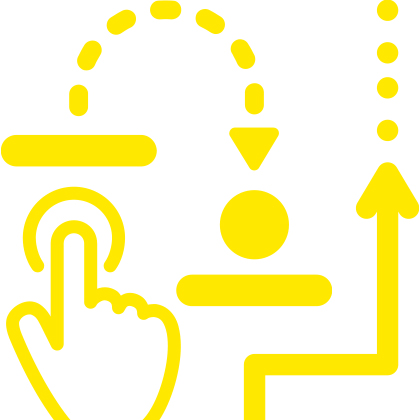 In the year since we first announced the launch of CIM’s Human Aging Project (HAP), the ambitious alliance has seen some exciting developments.
In the year since we first announced the launch of CIM’s Human Aging Project (HAP), the ambitious alliance has seen some exciting developments.
In September, HAP Director Jeremy Walston, geriatrician Peter Abadir and colleagues at Johns Hopkins’ Whiting School of Engineering received news that the National Institutes of Health has funded a $20 million grant that will support important HAP initiatives in artificial intelligence and technology. And over the summer, the first multidisciplinary team in HAP’s Gerotech Incubator Program began working to identify a clinically relevant problem to be solved.
“This $20 million grant brings a lot of pilot money to HAP investigators who have these great ideas that are just getting started, and there is a network of businesses connected with the grant that will allow us to quickly implement many of the solutions for older adults that we have been thinking about,” says Walston. “It’s also wonderful,” he adds, “that the funding will meld nicely with the Gerotech Incubator Program.”
He is referring to a series of seven innovation incubator hubs — focused on challenges in aging including fall prevention, neurodegenerative diseases, sociodemographic stressors and more — which bring together teams that include two to three engineering students, one medical resident or nursing doctoral candidate, two business students from Hopkins’ Carey Business School and several faculty mentors.
In Phase 1 of their work, the teams identify a specific problem to solve, perform a market analysis and ultimately develop a prototype or product. Phase 2 is the “accelerator” mode, during which the teams find funding, test prototypes and develop patents, and solicit support from industry.
To date, more than two dozen master’s students and two dozen faculty members from across Johns Hopkins have signed on to work within these incubators, notes Peter Abadir, a co-leader of the Gerotech program and the Salisbury Family CIM HAP Scholar.
With the nation’s rapidly graying population, there are a variety of important health concerns that need to be addressed — ranging from frailty to incontinence to dementia — says Abadir. “On the other side,” he says, “there is a surge of technologies, an explosion of artificial intelligence, machine learning, robotics and sensing. But for some reason, there have been barriers to working between the technology side and the clinical, health care side. This is where we are putting our innovation hubs to work together.”
Over the summer, the first incubator team of master’s students began an exhaustive investigation in their initial effort to identify an area of focus for their innovation.
“We had a really busy summer, shadowing doctors for days — in the ventilator care unit, the memory clinic,” says team member Joshua Blair, a master’s student in the Whiting School of Engineering’s Center for Bioengineering Innovation and Design program. “We went on home visits, and we shadowed many nurses and physical therapists. We also interviewed a lot of people,” he says, including patients, caregivers, quality assurance workers, hospital administrators, researchers, med-tech executives and more. The team aimed to complete its discovery process and define its project by mid-autumn.
“All of us on the team chose to focus on geriatrics when we came to Johns Hopkins for personal reasons,” says Blair. “From a young age, we were all in positions of being a caregiver for an older person or seeing our grandparents go through something challenging, and this really inspired us to go into the field.”
CIM Director David Hellmann is excited by the rapid progress of initiatives within CIM’s Human Aging Project. Noting that there are currently 10 faculty scholars working within the center, with eight of those scholar posts funded by donors (see sidebar box above), he says, “By leveraging our remarkable assets from across Johns Hopkins, we have the potential to dramatically improve the lives of older adults and to make significant advances within the field of geriatrics.”